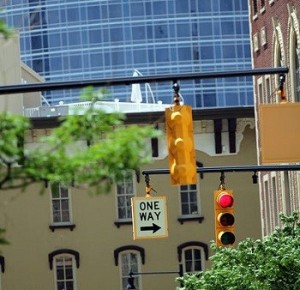Researchers are hoping that their software will be able to provide concise information regarding complex situations.
While traffic apps have been available for smartphones for some time now, when it comes to providing that same feature through a smartwatch app, there are far greater challenges, if only because of the tiny size of the screen.
The goal is to be able to provide useful assistance regardless the complexity of a traffic snarl.
Beyond the size of the screen, the reason that everything needs to be greatly simplified is that if people are going to be wearing a smartwatch while behind the wheel, so they cannot be using these wearable technology devices in a way that will cause a dangerous distraction. This means that the tech must be accessible, customizable, and readable without having to spend any real amount of time focusing on the screen or changing the settings. Finish researchers are now demonstrating a way for this to occur in a practical way for real life situations.
The smartwatch app is being tested by a team of researchers from the VTT Technical Research Centre.
 These apps for wearable technology are meant to bring together social communication tools with speech recognition, into a simple looking display that will depict traffic information in an intelligent and non-distracting fashion.
These apps for wearable technology are meant to bring together social communication tools with speech recognition, into a simple looking display that will depict traffic information in an intelligent and non-distracting fashion.
The application is being tested in Helsinki, the capital of Finland through a “Park&Ride” app that has been designed for wearables. Within those tests, it was found that this method was even more effective than navigation over smartphones.
The information that is available through the wearable technology application provides drivers with quite a bit of information, such as whether a level rail crossing now has a train that is approaching. This will alert drivers nearby, or will allow the first driver to dictate a message so that other road users that are nearby will be warned that the train will be coming and that there will be a delay at the crossing.
The researchers concluded that this process will allow for messages to be safely spread in a non-distracting way through the smartwatch app more quickly than would be possible through a traditional mobile application.

